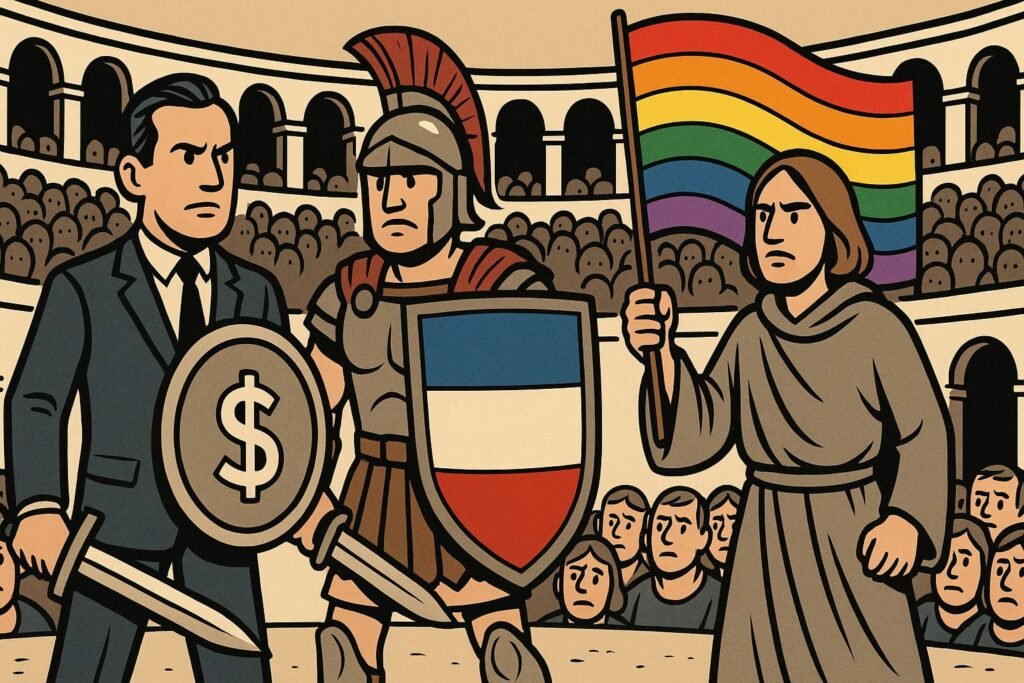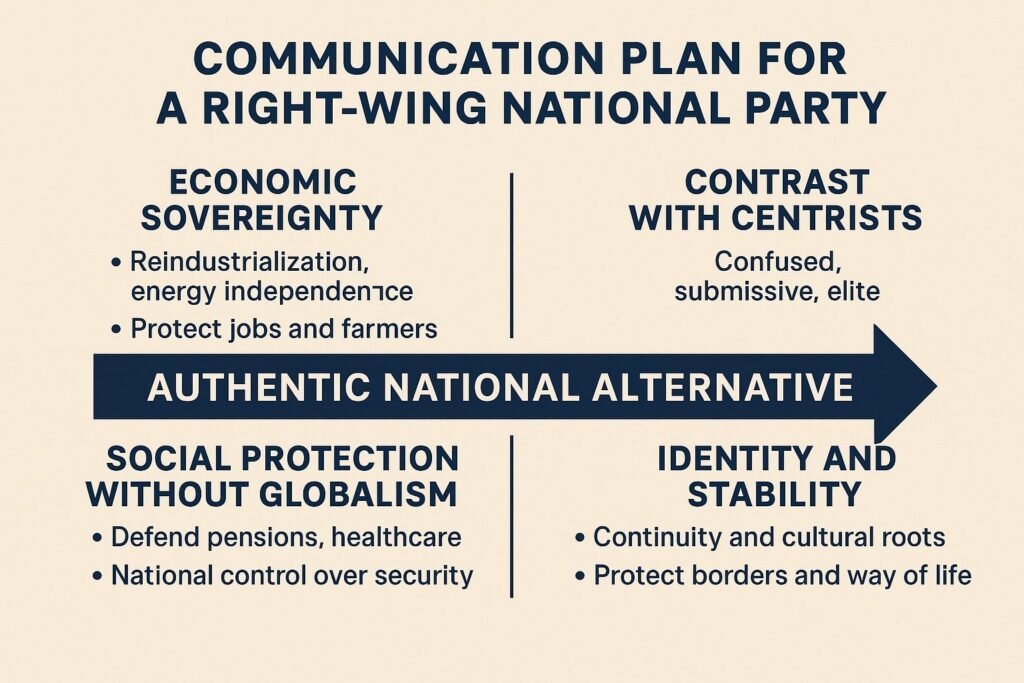Three Political Camps Explained – Nationalists, Globalists, Justice
From Blurry Labels to Real Power
We’re told today’s politics is chaos: populists shouting, globalists plotting, activists marching. But look closer and a pattern appears. Three camps dominate the stage — nationalists, globalists, and the justice camp. They clash constantly, yet they also need each other.
Scratch the surface and these “camps” aren’t new at all. They’re just modern masks for the old power struggle: Warriors, Merchants, and the Church.
Table of contents
What Are the Three Camps?
1. The Nationalists (Warriors)
- Borders first, jobs at home, culture defended.
- Tariffs, sovereignty, “America First” or “Britain First.”
- Trump, Orbán, Meloni: the “warrior politicians” of our era.
2. The Globalists (Merchants)
- Free trade, open borders, smooth markets.
- Media spin, lobbying, Big Tech censorship.
- Their slogans: “stability,” “inevitability,” “progress.”
3. The Justice Camp (The New Church)
- Identity politics, ESG, climate activism.
- Social media mobs and moral crusades.
- Driven by faith in equality — enforced through shame.
How They Got Blurred
For years, globalists and justice warriors looked like allies. Corporations wrapped themselves in rainbow logos, politicians spoke “equity” while signing trade deals. It seemed like one camp.
But interests diverged: corporations want stability, activists want upheaval. Their uneasy alliance is breaking down.
The Split Out in the Ope
- Nationalists attack both: globalists as sellouts, activists as zealots.
- Globalists defend neoliberal order, masking it with woke branding.
- Justice Camp grows frustrated with corporate lip service, demanding real change.
The result: open three-way conflict.
Why It Matters
Understanding the three camps is useful — but not enough. They’re surface categories. Behind them, the deeper forces of history are still at work:
- Nationalists = Warriors trying to reclaim sovereignty.
- Globalists = Merchants protecting their empire of money.
- Justice Camp = The New Church preaching morality and identity.
The labels change. The power struggle doesn’t.
Conclusion
The “three camps” frame is a shortcut to understanding today’s chaos. But if you want to see who really holds power, follow the deeper pattern: merchants buying influence, warriors fighting for sovereignty, and the new church of woke ideology preaching its gospel.
Politics isn’t random. It’s a rigged game between the same three forces, dressed in new costumes.
👉 For the bigger picture on how merchants, warriors, and ideology shape today’s politics, read our flagship piece
👉 Want the full map of today’s power struggles? Visit The Politics of Power Explained Hub
FAQ: The Three Camps Explained
What are the three political camps today?
Nationalists, globalists, and the justice camp — which map onto Warriors, Merchants, and the New Church.
Why do globalists and the justice camp clash?
They pretended to align, but corporations want stability while activists want upheaval.
How do nationalists fit in?
They’re the warriors, fighting back for borders, sovereignty, and culture.
Isn’t this just new labels for old ideas?
Exactly. The “camps” are surface. The real structure of power — merchants, warriors, church — never went away.



